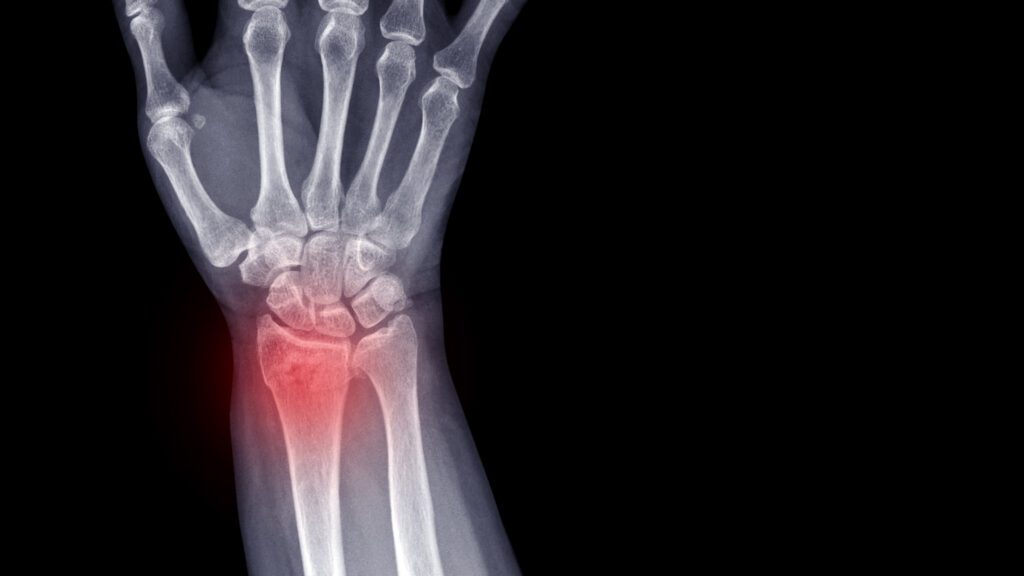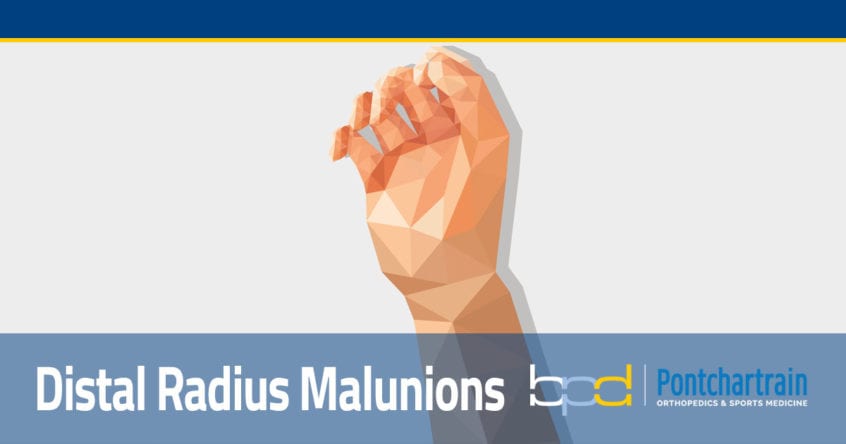What are Distal Radius Malunions?
The radius is the larger of the two bones that connect the wrist to the elbow. Where the radius connects to the wrist joint is called the distal radius. The distal radius supports the majority of forces at the wrist joint with its large joint surface. A fracture of the radius near the wrist is called a distal radius fracture.

What causes Distal Radius Malunions?
Fractures of the distal radius are a common injury, constituting over 70% of all forearm fractures. Distal radius malunions occur when a fracture of the distal radius heals with improper alignment, incorrect length, articular incongruity (which places the patient at risk for post-traumatic arthritis), or a combination of these factors. This can happen when a patient does not seek medical treatment for an injury of the wrist, allowing the fractured bones to heal improperly and fuse in the wrong position.
Who is at risk for a malunion?
Anyone who fractures their wrist and does not seek medical attention could be at risk of developing a distal radius malunion. Because a high percentage of wrist fractures involve the distal radius, and a significant malunion can cause considerable disability, all wrist injuries should be evaluated by a wrist specialist.
How are Distal Radius Malunions Diagnosed?
Common symptoms of a malunion include pain,stiffness, weakness, dysfunction of the wrist, or deformity. Much like acute fractures, malunions are diagnosed initially with a history detailing the initial injury and thorough physical exam. X-rays are routinely taken, and at times advanced imaging with CT scan or MRI is needed.
Treatment Options
Treatment of distal radius malunions depends on several factors. These include the amount of displacement, the location of fracture, severity of pain, age, and activity level as well as physical demands of the patient. If the patient does not experience discomfort or if the malunion occurs in a bone that does not require frequent movement, the patient may not require treatment. However, if the malunion causes a severe deformity that hinders the patient in his or her daily activities, surgery may be required.
When Surgery is Required
In cases of marked deformity, dysfunction, or significant pain, surgical fixation may be needed to realign the bone. With the bone healed, the bone may have to be “re-broken” in a controlled manner called an osteotomy. Plates and screws, and bone grafting may be needed to repair distal radius malunions.
Following surgery, the wrist is immobilized for 1-2 weeks. Following this, protected mobilization and bracing is used until the bone has fully healed.

